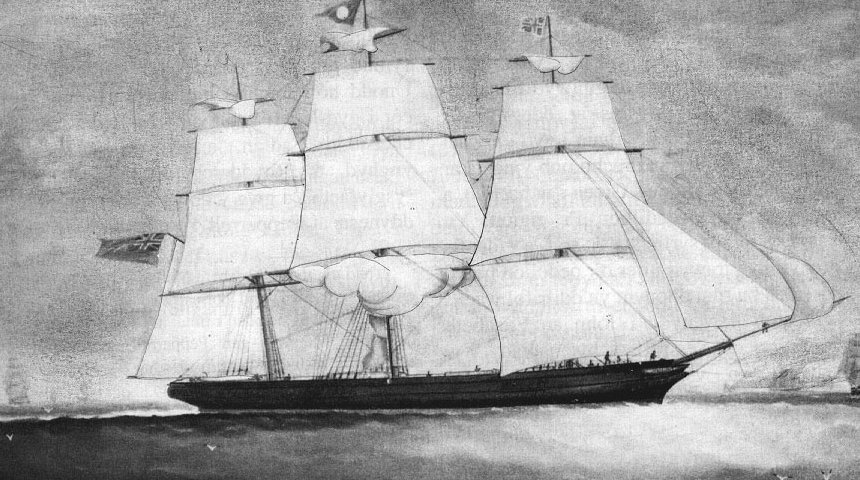It’s no secret that most people in Argentina have some sort of European heritage, mostly from countries like Spain, Italy and Germany. It may come as a surprise though to hear that Argentina is also home to several Welsh colonies. The story of the Welsh in Argentina can be traced back to the 19th century, and their communities are very much alive today.
On 28th May 1865, 153 Welsh men, women and children set sail from Liverpool on the ship Mimosa, arriving on the coast of Chubut, Argentina two months later on 28th July.
The Welsh embarked on their dangerous journey to Argentina in an attempt to preserve their culture, language and traditions. Welsh colonies had already appeared in places like Pennsylvania and New York in the United States, and now Welsh nationalists looked to South America as their next destination to settle. In the United Kingdom, it was viewed that Welsh culture was under threat, as a result of England holding the majority of the power on the island, and the English language becoming more dominant in Wales than Welsh.
The idea to begin a new Welsh colony in Argentina arose after editor, Lewis Jones, travelled to the Argentine Patagonia, accompanied by Welsh politician Sir Love Parry-Jones, in search of new land. Discussions were held with Argentine minister, Guillermo Rawson, who offered the Welsh land in the province of Chubut.
The Welshmen returned to their country and began to distribute pamphlets to convince people to emigrate to Patagonia. The promises made by the two men were largely overstated, but they did manage to convince 150 people to follow them to a foreign land over 7000 miles away from home.

By Unknown author – Museo del Desembarco, Puerto Madryn
The Mimosa (shown above) arrived in Chubut during midwinter, and the place where the boat landed was baptised as Puerto Madryn – this became the first Welsh settlement in Argentina.
Upon arriving, the Welsh migrants were faced with a very different reality to the one which they’d been promised by Jones and Parry-Jones. Chubut had just experienced a severe drought, with flash floods following not long after which destroyed several of the newly built homes constructed by the Welsh settlers. However, despite food and drinking water also being difficult to find, the colony eventually began to prosper, thanks to help offered by the native Tuhuelche people and provisions being sent from Buenos Aires. The natives taught the Welsh how to hunt and grow crops, and in return the Welsh offered the Tuhuelche Welsh bread.
Although things were initially difficult for the Welsh settlers, in 1874 another ship of migrants arrived in Chubut. Many of those who arrived knew better how to live off the land, and so things started to become easier.
In the coming years, the Welsh would build up their communities and found new ones. New towns would pop up in the province of Chubut, such as Gaiman, Trelew and Rawson. The Welsh named their settlement as Y Wladfa, which refers to all of the individual towns that were founded.
The Welsh began to expand from Puerto Madryn as they quickly discovered that the area lacked sufficient fresh water supplies and possessed infertile land. The settlers then decided to move further inland and hence the towns of Rawson and Gaiman were founded. Rawson became the capital of the Province of Chubut and is known as the first stable population of the province. It’s also home to the oldest chapel of the region, La Capilla Galesa Ricardo Berwyn, which was built in 1881.
The presence of the Welsh today
The Welsh settlements in Chubut continue to thrive today, Puerto Madryn is now home to over 100,000 people and has become a popular tourist destination for whale watching. Like in Wales itself however, the Welsh language is nowhere near as prominent as it used to be. There are many Welsh schools in Chubut where the language is taught and used daily, but the number of people who use it as their first language has declined over the years. That being said, it’s estimated that there are around 10,000 people in Argentina of Welsh descent whose mother tongue is Welsh, and a further 25,000 whose second language is Welsh. The numbers are quite impressive considering that in Wales, it’s estimated that only between 500,000 – 900,000 people can speak the language!
This year, the town of Gaiman celebrates 150 years since the construction of its first house, built by Welshman, David D. Roberts in 1874. The construction of the house marked the beginning of the settlement and in the coming months and years, several other buildings would spring up in the area, forming the community that continues to exist today.
Gaiman is also home to the Museo Histórico Regional, which is dedicated to celebrating Welsh history. The museum is housed in the old railway station of Gaiman, which previously formed part of the Central Chubut Railway.
The Welsh communities of Chubut are definitely interesting places to visit. In Gaiman, there are many places where you can eat traditional Welsh Cakes and drink Welsh Tea – 7000 miles away from Wales!
In the video above, Welsh YouTuber, Simon Wilson, explores the town of Gaiman and even manages to speak with some of the locals in Welsh! As much as the language’s prominence has reduced over the years, the video shows just how alive the Welsh communities are today!

